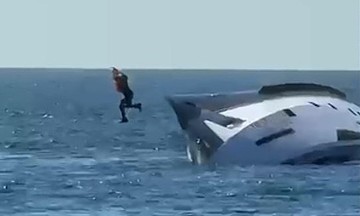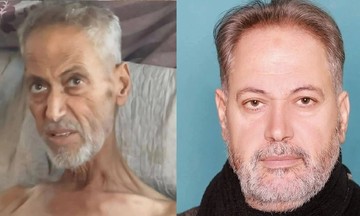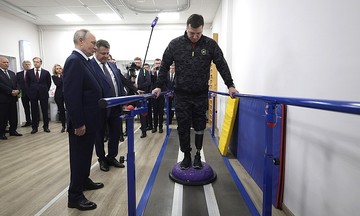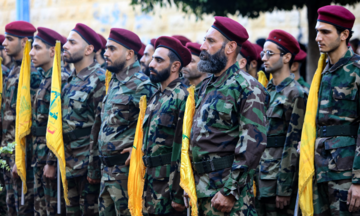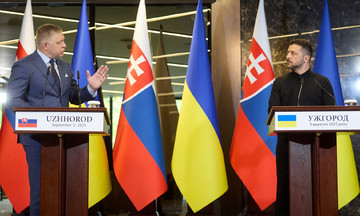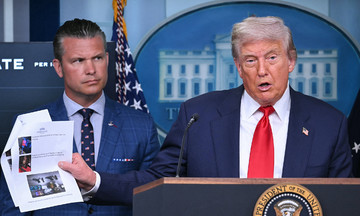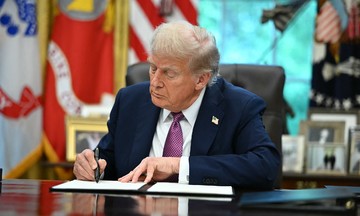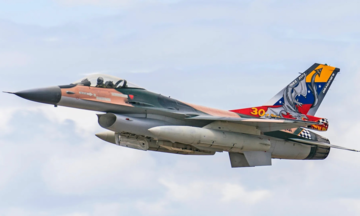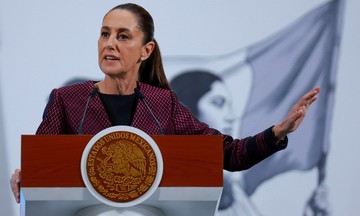On 2/9, Kim Jong-un, the leader of North Korea, arrived in Beijing, China, aboard his distinctive olive-green and yellow-striped armored train to attend the 80th anniversary of the victory over fascism, marking his first attendance at a foreign military parade.
The armored train has become a familiar sight during Kim's international travels over the past decade. Since assuming power in 2011, he has made 9 trips abroad, mostly using this specialized train.
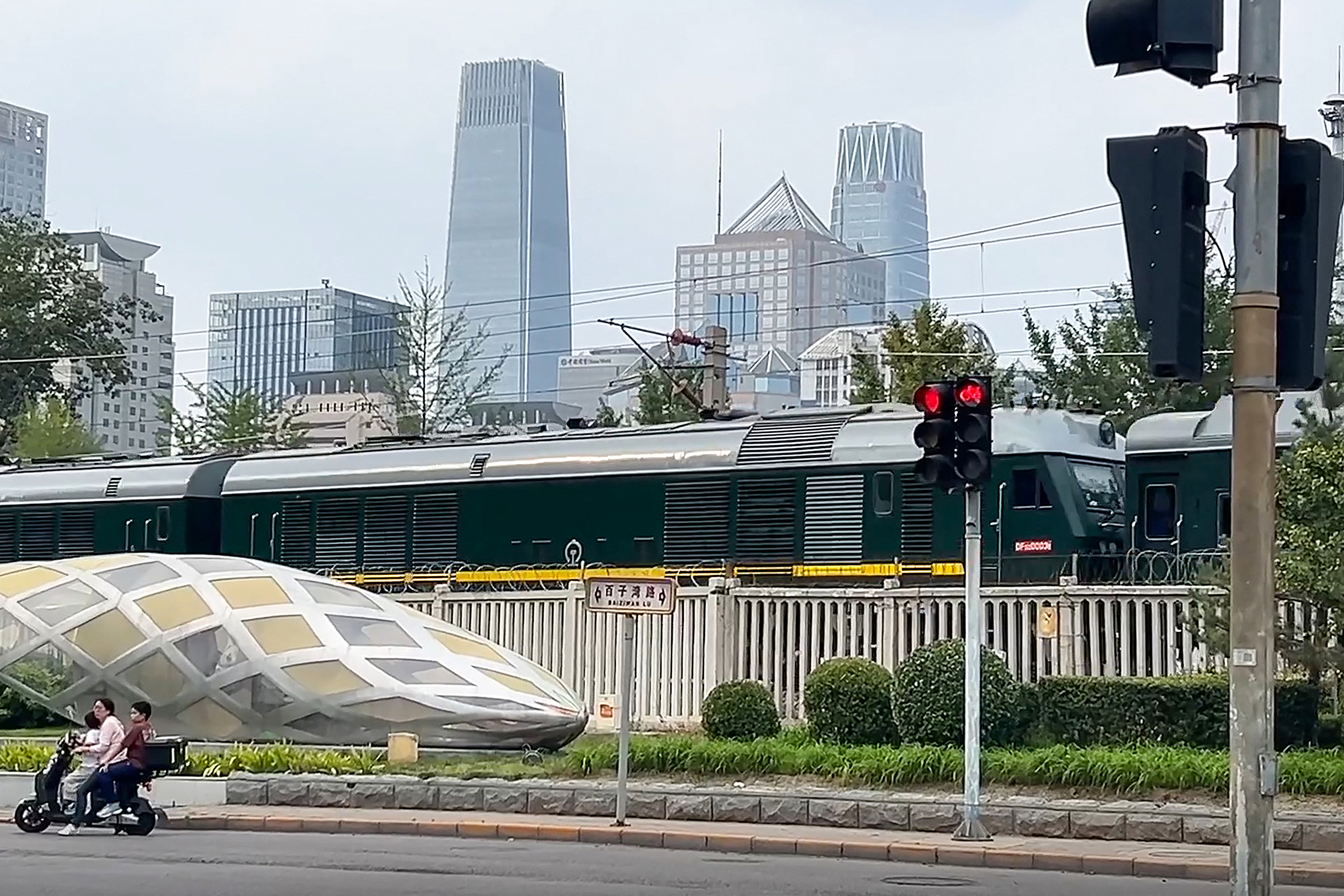 |
Kim Jong-un's train arrives at a station in Beijing, China, on 2/9. Photo: AFP |
Kim Jong-un's train arrives at a station in Beijing, China, on 2/9. Photo: AFP
Kim has only flown on his Il-62 three times: to China to meet President Xi Jinping in Dalian in 5/2018, to Singapore for the first-ever U.S.-North Korea summit the following month, and then back to China for a meeting with Xi before returning home.
North Korean media rarely releases images or information about the train's interior design. Few people have ever been on board.
Images released by the Korean Central News Agency (KCNA) during this recent visit to China show Kim's office paneled in luxurious wood, with the national flag and emblem carved in wood behind him and velvet curtains on the windows.
Photos published in 2019, when Kim returned from China, revealed a reception area with what appeared to be white plastic walls, green carpeting, and pink sofas.
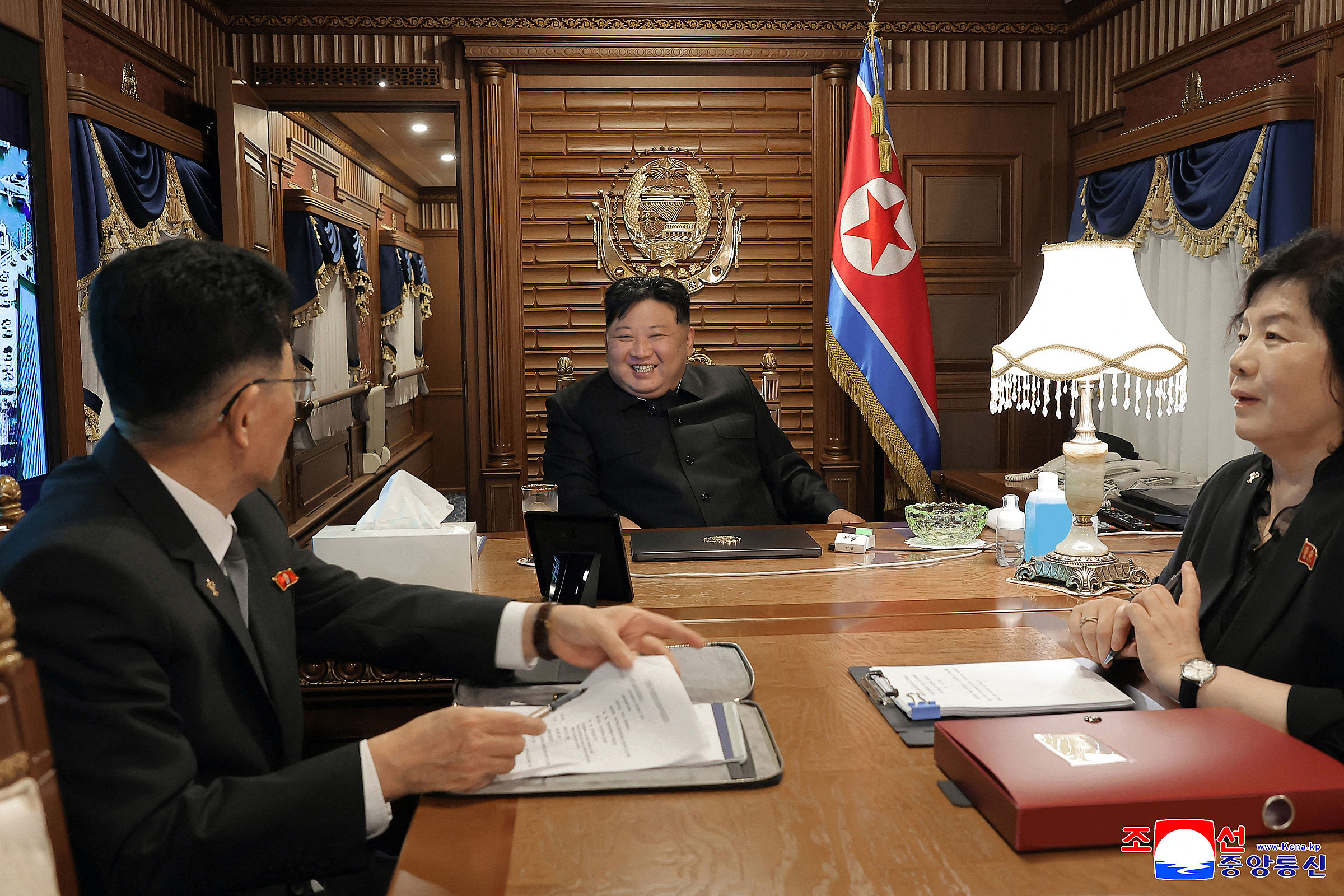 |
Kim Jong-un (center) on his armored train en route to Beijing on 1/9. Photo: KCNA |
Kim Jong-un (center) on his armored train en route to Beijing on 1/9. Photo: KCNA
The armored train was also the preferred mode of transport for previous North Korean leaders, Kim Il-sung and Kim Jong-il, for both domestic and international travel.
Konstantin Pulikovsky, President Vladimir Putin's special envoy to the Far East from 2000 to 2005, accompanied Kim Jong-il on the armored train during a 20,000 km journey from Pyongyang to Moscow and back in 2001.
He described a consistently high-end menu of Eurasian cuisine, along with a supply of fresh seafood and imported alcohol, throughout the 24-day trip.
South Korean experts believe North Korea has several nearly identical trains for its leader, manufactured at a plant in Pyongyang. Each carriage has bulletproof windows, and the walls and floors are reinforced to withstand artillery fire, earning it the nickname "fortress on rails".
Georgy Toloraya, a veteran Russian diplomat who traveled with Kim Jong-il in 2001, revealed that Russian railway technicians discovered thick steel plates under two main carriages. These carriages appeared to be Soviet-made but extensively modified by North Korea.
Ahn Byung-min, a South Korean expert on North Korean transportation, noted that the country's railway system is outdated, limiting train speeds to 40 km/h. "The armored train carrying the leader travels even slower due to the added weight of the protective armor," he said.
 |
Kim Jong-un speaks with Chinese officials during his return trip to North Korea in 2019. Photo: KCNA |
Kim Jong-un speaks with Chinese officials during his return trip to North Korea in 2019. Photo: KCNA
South Korean intelligence suggests that each of Kim's rail journeys typically involves three trains, totaling 90 carriages.
An advance train carrying hundreds of security personnel goes ahead to check stations and tracks. The main train with the leader and his staff follows 20 to 60 minutes later. A support train brings up the rear with additional security, equipment, food, and vehicles.
Train travel allows for a large entourage, including armored vehicles and communication equipment, and is less vulnerable to attack than air travel. Experts believe the special train not only protects the North Korean leader but also serves as a political symbol, reinforcing Kim's image as a tireless worker.
Experts also see Kim's preference for trains over planes as a shrewd communications strategy. "The world watches his multi-day journey, focusing attention on him before major diplomatic events," said Professor Koh Yu-hwan of Dongguk University in South Korea.
Thanh Danh (AFP, Reuters, Drive)



